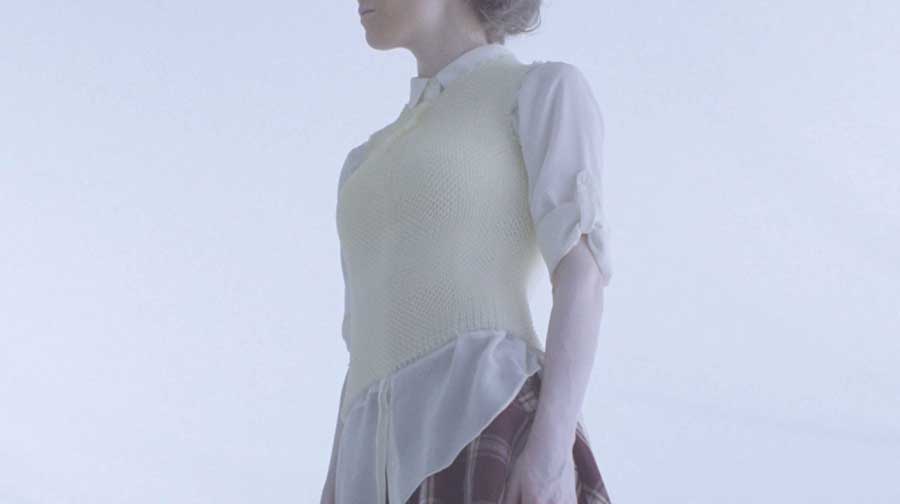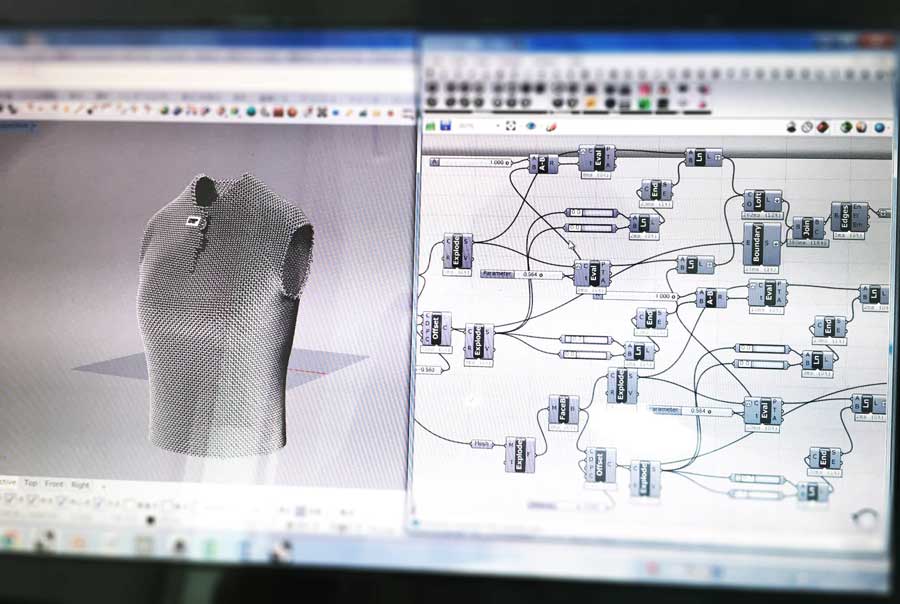 Sure, 3D printed fashion is a thing. We’ve seen gold-plated high heels, namebrand sprinting shoes, dresses fit for the urban warrior princess, and even lingerie. This is all footwear and apparel that yes, you absolutely can put on your body and walk around in—but how realistic is that? So far, we’ve seen everything from high fashion to some products that might work but so far seem quite unattainable in our worlds, whether in the city, suburbia, or the university atmosphere. Designers keep working toward 3D printed fashion that will one day offer mass appeal, but so far nothing has caught on with great popularity.
Sure, 3D printed fashion is a thing. We’ve seen gold-plated high heels, namebrand sprinting shoes, dresses fit for the urban warrior princess, and even lingerie. This is all footwear and apparel that yes, you absolutely can put on your body and walk around in—but how realistic is that? So far, we’ve seen everything from high fashion to some products that might work but so far seem quite unattainable in our worlds, whether in the city, suburbia, or the university atmosphere. Designers keep working toward 3D printed fashion that will one day offer mass appeal, but so far nothing has caught on with great popularity.
A company from Japan may be changing all that quickly, however, with real clothes. And by no means are we discussing down home, frumpy, clunky, unattractive wear. This is good looking stuff, and as the designer makes clear, it’s meant to become a future standard for daily life. Considering that we see 3D printing making impacts nearly everywhere, offering greater affordability and convenience due to innovations that allow for myriad materials and customizations, it’s really no surprise to think that one day it will be the norm.
 Masaharu Ono of Free-D is a talented designer known for his creative approach to both 3D printed fashion and technology. He is collaborating with STARted on the AMIMONO clothing line which, as he explained to 3DPrint.com recently, is their attempt at a different concept of clothing, unlike anything the world has seen before.
Masaharu Ono of Free-D is a talented designer known for his creative approach to both 3D printed fashion and technology. He is collaborating with STARted on the AMIMONO clothing line which, as he explained to 3DPrint.com recently, is their attempt at a different concept of clothing, unlike anything the world has seen before.
“This is real clothing created with a 3D printer,” Ono told 3DPrint.com.
The idea, ultimately, was to create a knitted product, and what you see is a vest with interlinked material, shown off with other traditional pieces of clothing, beautifully juxtaposed. Ono explains that the team was able to make the piece through 3D modeling, creating a special algorithm that was then used to create a woven pattern without any seams.
Using flexible TPU material in what was a rather complex process, Ono and the designers were able to provide a new level in elasticity, with the result being clothing that truly feels like cloth.“The clothing was modeled as it would be if it were knitted with thread inside the 3D software,” Ono told 3DPrint.com.
“Until now, 3D printed clothing has been limited to use only in shows or for display purposes,” said Ono. “However, using this method it is possible to create clothing that can actually be used for daily wear.”
The designers see their work as a new yet ‘unfamiliar’ concept that will show the world how 3D printed items really can exist in the world, and ‘without issue.’ This material and 3D printing method allow for something much different than plastic clothes. The AMIMONO fashion is woven, not unlike a wool sweater, according to STARted. The material offers uncommon flexibility thanks to TPU, allowing for the desired rigidity along with the ability for expansion and contraction, as well as foldability.
While they are only offering up one piece so far, as you can see in the video, AMIMONO certainly presents both elegance and versatility, not to mention the opportunity for customization and material that will stand the test of time for years of wear. Discuss further in the 3D Printed Knitted Dress forum over at 3DPB.com.
Subscribe to Our Email Newsletter
Stay up-to-date on all the latest news from the 3D printing industry and receive information and offers from third party vendors.
You May Also Like
3D Printed Heat Spreader Could Improve Efficiency of Electronics
The low-hanging fruit for decarbonization has long been improving the efficiency of existing systems, hence the justification for LED lights and ENERGY STAR certified appliances. While such minor moves are...
3D Printing News Unpeeled: Marine Gearboxes, 3D Printed Motors and $1.7 Million in Seed Funding
UK based Equipmake just released their Ampere-220 e-axle system. The system, which is meant for high performance electric cars, was similar to one released on the Ariel HIPERCAR. It has...
CEAD Unveils 36-Meter-Long 3D Printer for Abu Dhabi’s Al Seer Marine
CEAD, a Dutch original equipment manufacturer dedicated to large-format 3D printers, has unveiled what it claims to be the world’s largest robotic arm-based 3D printer. At 36 meters long and...
3D Printed Biocomposites Could Help Reduce Marine Plastic Pollution
Concerns about the impact of plastic litter and microplastics in the oceans are at the forefront of environmental study. For decades, the marine environment has suffered from the degradation of...







































